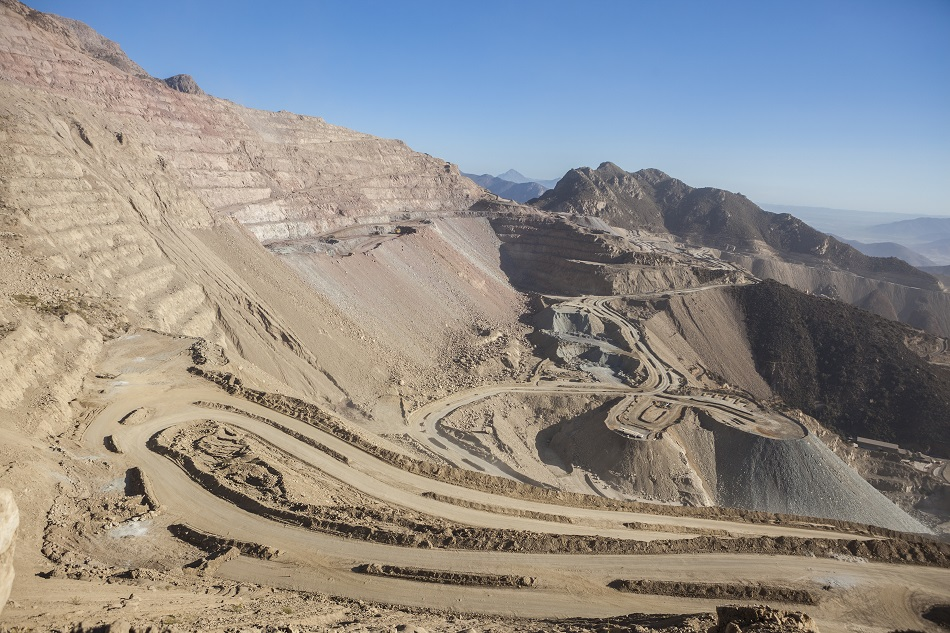
Image Credit: erlucho/Shutterstock.com
As one of the most successful economies within Latin America, Chile’s mining sector provides approximately 9% of both indirect and direct jobs throughout the nation. This article will provide an overview of Chile’s most profitable mineral resources, and how the mining industry of this nation plays a crucial role in maintaining their economic success.
Introduction
Chile is located between Argentina and Peru in the southern part of South America, where this nation borders the South Pacific Ocean. It is the 38th largest country in the world with a total area of 756,102 km2. The country has a total population of approximately 19 million as of October 2019.
Economic Overview
Despite undergoing strong economic reforms during the early 1990s, the economic growth rate of Chile has continued to fluctuate at rates that are below 5%. The economy of Chile is expected to experience a 1.8% growth by the end of 2019. Although the mining industry of Chile suffered during the first quarter of 2019, growth is expected as sectors are expanding marginally throughout the nation. As of 2017, the gross domestic product (GDP) of Chile was estimated at a total of $277.1 billion, and the mining sector accounted for approximately 10%.
Overview of Resources
As the top producer of both copper and iodine in the world, Chile is also home to several other highly valuable natural resources including coal, natural gas and oil, molybdenum, precious metals such as gold and silver, selenium, rhenium, nitrates, iron ore, timber and, lithium. The country often supplies mineral resources in the crude form.
Globally, Chile is a leading producer of:
- Copper, accounting for 34% of global production and 50% of this nation’s total exports
- Iodine, 62% of global production
- Rhenium, 52% of global production
- Lithium, 18% of global production
- The second-largest producer of arsenic, boron, and molybdenum
- The fifth-largest producer of silver and pumicite
Industrial Minerals
In 2018, Chile’s Ministry of Mining’s Sustainable Development Division announced 123 new projects that had been approved with Environmental Qualification Resolutions (EQR). At a total value of $34 billion USD, these completed projects will provide over 66,000 jobs during their construction phase and over 36,000 jobs once the sites are up and running. Since Antofagasta and Atacama, which are two cities located in northern Chile, are home to some of the most important mining reserves and operations in these nations, a majority of these new projects will be constructed in these areas.
Metals
By 2017, Chile produced over 5.5 million tons of copper, which is equivalent to approximately 27% of the global copper production. The combination of rising copper prices and a continuously growing copper production throughout Chile is expected to continue to support the Chilean economy’s success.
Escondida, Los Bronces and Esperanza are the major mines in Chile that produce copper. Escondida, which is primarily owned by BHP, is the worlds largest copper mine. In fact, in 2018 alone, Escondida reported an output of over 1.2 million tons of copper, which was a 34% increase compared to that of 2017.
The Los Bronces mine, which can produce 400,000 million tons of copper concentrates each year, is an open cut mine located approximately 65 kilometers north of the capital city of Santiago. Los Bronces has been mined for over 150 years; however, its current life is expected to go slightly above 30 years from now. In 2011, Los Bronces underwent a $2.8 billion expansion that increased its capacity to 400,000 tpa by enhancing the previous grinding, mineral transport and concentration facilities.
Compañía Minera del Pacífico S.A. (CMP) is a major producer of iron ore in the country. By 2026, the production of iron ore in Chile is expected to reach up to 33.3 million tpy.
Investment
As one of the fastest-growing economies in Latin America over the past 20 years, Chile maintains a highly dynamic business environment that has been very attractive to potential investors. This interest has been further supported by the political stability and legal security of Chile, as well as its openness to trade with international groups. In 2014, UNCTAD’s World Investment Report found that Chile was the world’s 17th largest recipient of foreign direct investment (FDI). By 2017, FDI in Chile was estimated at a value of $6 billion USD.
In 2018, Chile’s mining project portfolio was evaluated at a net worth of $43.8 billion USD. In terms of mining, the primary international sources of Chile’s FDI came from Canada, Australia, the United States and Japan. Much of the international attraction to Chile’s mining industry is attributed to its extensive mineral endowment that is home to large deposits, as well as the nation’s investor-friendly regulations.
Sources and Further Reading
This article was updated on 3rd February, 2020
Disclaimer: The views expressed here are those of the author expressed in their private capacity and do not necessarily represent the views of AZoM.com Limited T/A AZoNetwork the owner and operator of this website. This disclaimer forms part of the Terms and conditions of use of this website.